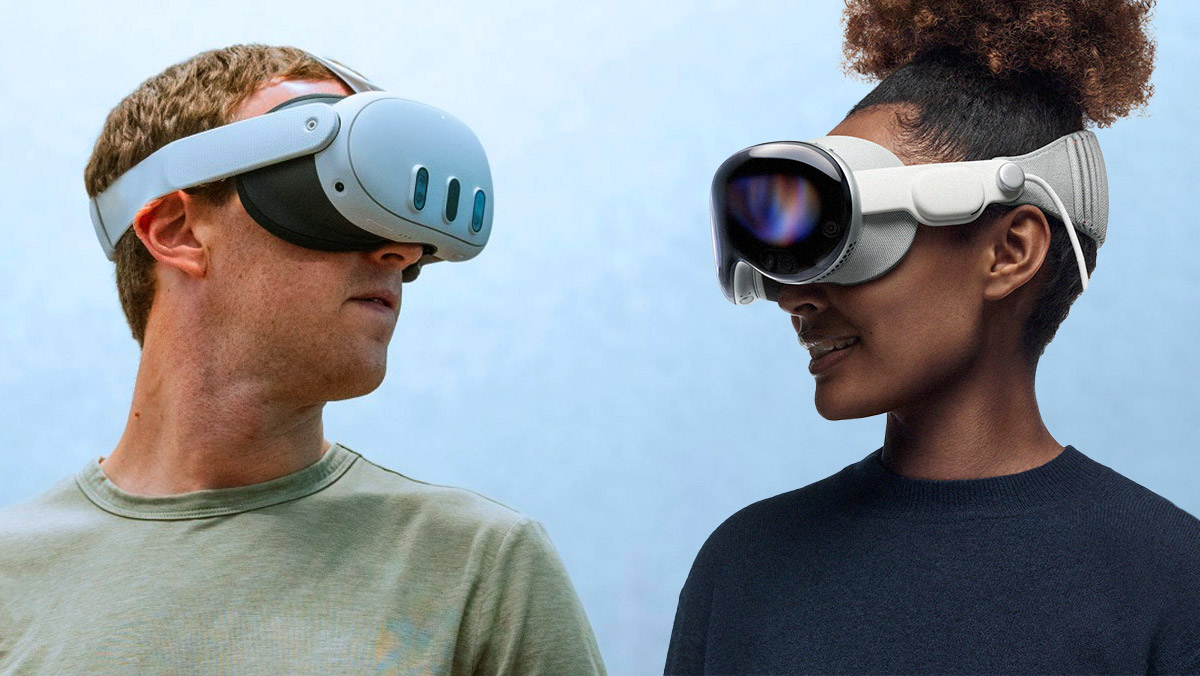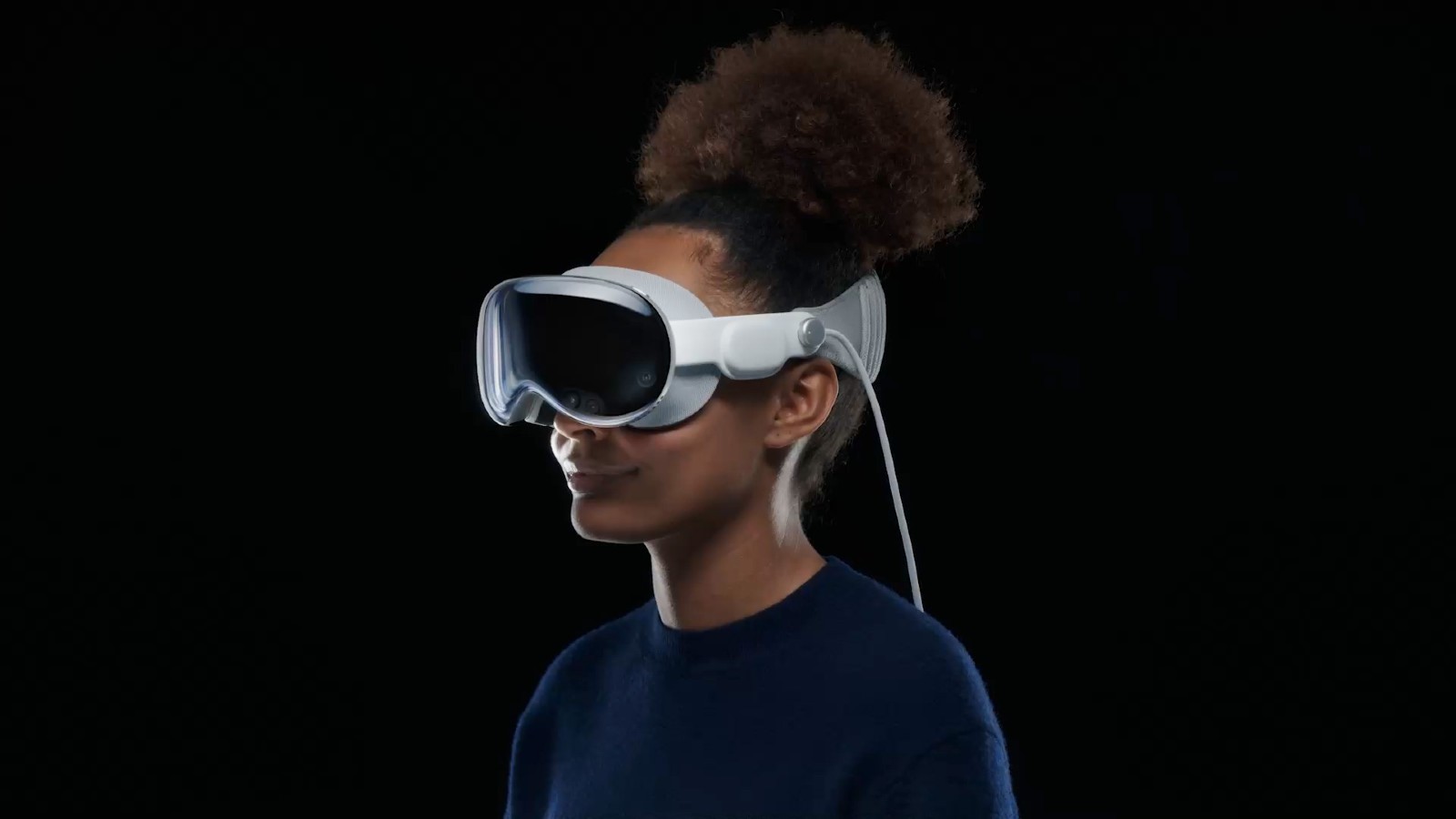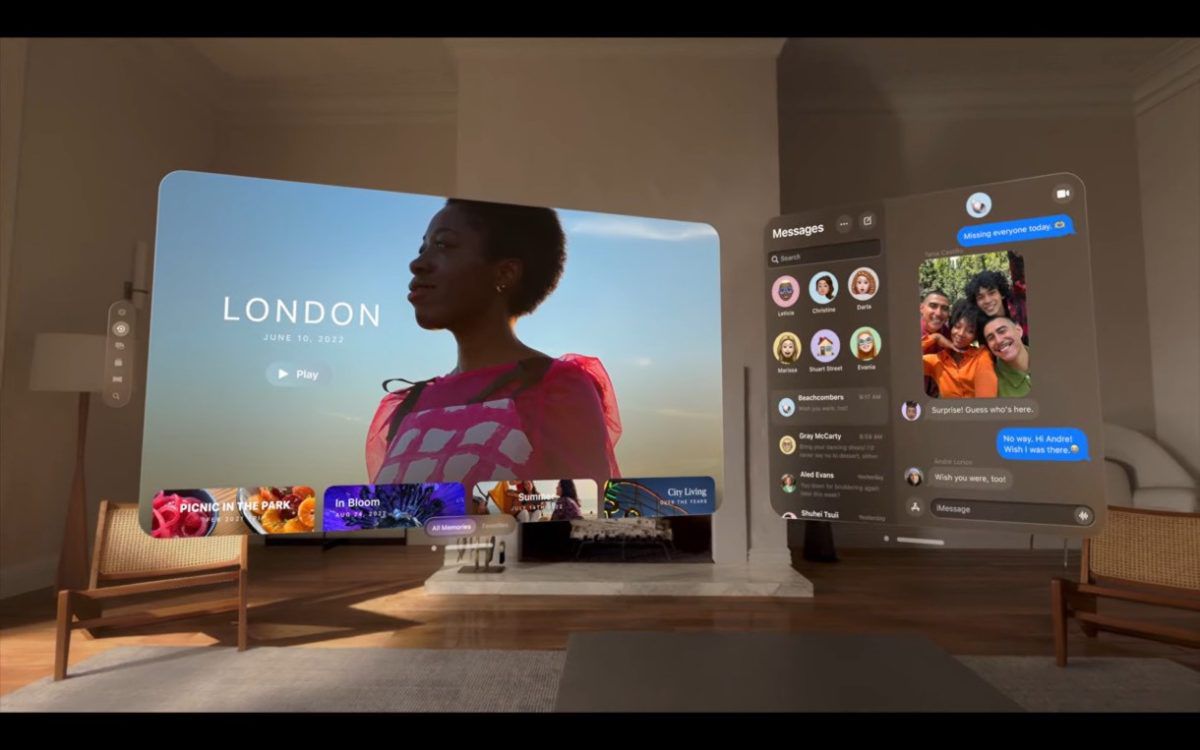Highlights
- Advanced sensors and cameras in Vision Pro enable extensive data collection.
- Eye tracking raises potential for targeted advertising and health data exposure.
- Apple emphasizes encrypted data and on-device processing for security.
- Concerns about third-party app data use and behavioral profiling persist.
Apple is stepping into a new realm with the Apple Vision Pro and its visionOS platform.
While this headset represents a significant technological advancement with features like audio ray tracing, TrueDepth for 3D mapping, multiple microphones and cameras, and advanced tracking capabilities, it also raises substantial privacy concerns.
A newsletter by 9to5Mac delves into the possible privacy issues that could plague the Vision Pro when it goes on sale next month.
Vision Pro’s Potential Risks

The Apple Vision Pro is equipped with an array of sensors for audio ray tracing and TrueDepth 3D mapping, six microphones, eight external cameras for image capturing and head/hand tracking, and four internal cameras for eye tracking and Optic ID.
While these features enhance user experience, they also open the door to extensive data collection.
For instance, depth sensors can measure a user’s height, microphones can hint at their location, and head movements can potentially reveal emotional states.
Privacy Concerns

The collection of eye data is particularly concerning.
It has the potential for targeted advertising and behavioral profiling and could inadvertently expose sensitive health information.
Although Apple asserts that Optic ID data is encrypted and stored securely on the device, the extent of data collected through eye-tracking raises questions about the potential misuse of such sensitive information
Also Apple is limiting developers’ access to sensors and cameras on the Vision Pro and the real-time data collected by third-party applications presents risks regarding how this data is utilized and the insights it can provide about users.
Apple’s Security Measures

However, Apple is a nearly $3 trillion company by fluke.
Part of its success has been a very real commitment to the privacy of its users.
As such, Apple’s design team is likely to have anticipated the above-mentioned concerns.
Apple emphasizes that Optic ID data is encrypted and processed in a secure enclave, and all sensor data processing occurs on the device without transmission to servers or the cloud.
Apple also assures that gaze direction, eye movements, and pupil dilation data are kept private.
This information is not shared with Apple, third-party apps, or websites, with only the final user selections being transmitted.
Despite these security measures, the depth and nature of data collected pose a risk for behavioral analysis and profiling.
This could lead to privacy intrusions beyond the conventional scope of digital data collection.
FAQs
What are the privacy concerns associated with Apple Vision Pro?
The Apple Vision Pro, equipped with advanced sensors and cameras, raises privacy concerns due to its potential for extensive data collection.
Features like eye tracking could be used for targeted advertising and might inadvertently expose sensitive health information.
There are also concerns about third-party app data usage and behavioral profiling.
How does Apple Vision Pro’s technology impact user privacy?
Apple Vision Pro’s technologies, such as audio ray tracing, TrueDepth for 3D mapping, and eye tracking, while enhancing the user experience, also open avenues for collecting sensitive user data.
This includes the potential exposure of personal health data and the risk of behavioral profiling through the collected data.
What security measures has Apple implemented in Vision Pro to protect user privacy?
Apple has taken several steps to safeguard privacy in Vision Pro. This includes encrypting Optic ID data and processing it in a secure enclave on the device.
Apple also ensures that data like gaze direction and eye movements are kept private, not shared with third parties, Apple, or websites.
Are there any risks with third-party apps in relation to Vision Pro?
Despite Apple limiting developers’ access to Vision Pro’s sensors and cameras, the real-time data collected by third-party applications poses risks.
Concerns revolve around how this data is utilized and the insights it might provide about users, potentially leading to privacy intrusions.
What is the expected availability of the Apple Vision Pro headset at launch?
According to analyst Ming-Chi Kuo, Apple is set to release a limited batch of 60,000 to 80,000 Vision Pro headsets on February 2, a modest number compared to its annual iPhone shipments.
How does the Vision Pro headset compare to previous Apple product launches?
The Vision Pro headset is Apple’s most significant product introduction since the Apple Watch in 2014. Its limited initial release and unique features represent a new direction in Apple’s product strategy.
What unique features does the Vision Pro headset offer?
The Vision Pro is reported to include an eye-control interface, offering an immersive experience in activities such as watching 3D movies and exploring virtual environments, with customization options like tailored lenses for glasses wearers.
What are analysts saying about the Vision Pro’s impact on Apple’s sales?
While not expected to dramatically affect Apple’s sales immediately, the Vision Pro’s market performance will provide valuable insights for predicting the success of future versions.
Apple Will Only Produce Up to 80,000 Vision Pro Headsets for Launch, Sellout Likely. Details ?
Apple is planning to produce between 60,000 and 80,000 Vision Pro units for the February 2 launch of the device, according to analyst Ming-Chi Kuo.
With the small size of the shipment, Kuo believes that the Vision Pro will “sell out soon after the release.”
According to Kuo, though Apple has not yet defined the key applications for the Vision Pro and the price is high, the “groundbreaking technology innovations” and Apple’s “base of core fans and heavy users” will exhaust supplies of the device.
Kuo made similar comments earlier this week when he said that demand for the headset would cause it to sell out during pre-orders, and he believes there will be long shipping delays after the initial launch period.
Apple is expected to produce fewer than 400,000 Vision Pro headsets in 2024 due to the complexity of manufacturing.
The first run of Vision Pro headsets might sell out quick, but Kuo says that so far, it is unclear if the demand for the Vision Pro will be sustained “after the novelty wears off.”
Continued sales will depend on “clear and correct” product positioning and key applications from Apple.
Apple plans to release the Vision Pro on Friday, February 2, but pre-orders will be accepted starting on January 19 at 5:00 a.m. Pacific Time.
Orders are limited to the United States for the time being, and Apple has not yet provided details on when the headset might be available in other countries.
Customers that are planning to pick up one of the $3,500 Vision Pro devices should plan to pre-order immediately in order to ensure a headset on launch day.
What new details about the Apple Vision Pro were revealed by Xcode 15.2?
The recent Xcode 15.2 update has confirmed that the Apple Vision Pro will feature 16GB of RAM. This information was discovered in the Xcode files specifically related to the Vision Pro device.
What are the potential storage options for the Apple Vision Pro?
While Apple has only confirmed a 256GB model starting at $3,499, there is speculation, based on various reports and developer kit analyses, that the Vision Pro might also come in 512GB and 1TB storage variants. However, Apple has not officially confirmed these options.
What makes the Vision Pro’s chipset configuration unique?
The Vision Pro is expected to feature a dual-chipset system, combining the power of the M2 chipset for its primary processing needs and a separate R1 chipset dedicated to spatial computing, highlighting its advanced technological capabilities.
When will the Apple Vision Pro be available for pre-order and launch in the U.S.?
The Vision Pro is scheduled for pre-order in the U.S. starting January 19 at 5 a.m. Pacific Time, with its official launch on February 2.
This follows months of anticipation and speculation about the device.
In-app measurement of Apple Vision Pro headband and Light Seal sizes. Details?
According to the strings code discovered by Aaron Perris (via MacRumors), the application would support the scanning of faces to provide the correct measurement of Apple’s Vision Pro headband and Light Seal.
This is an additional option apart from visiting a retail store for manual sizing that will be offered to customers.
There are no exact steps on how the process will work. However, it is believed to be similar to the method given to developers who have access to the Vision Pro test kit.
Primarily, it uses an iPhone’s selfie camera and Face ID sensors to scan a user’s face and determine the actual size.
The recorded values and form should be sent to Apple for them to customize or adjust the bands and Light Seal before shipping them out.
The in-app scanning would not likely cover the customization of Zeiss lenses as this requires professional assistance.
It is possible you could send Apple the required prescription for the correct Zeiss inserts and readers, albeit at an additional cost.
Read More: Apple Vision Pro Headset: Limited Units and High Demand Forecasted by Ming-Chi Kuo
Read More: Apple Vision Pro Will Reportedly Feature 16GB of RAM and Likely Up to 1TB of Storage
Read More: Apple Vision Pro Headset Launch Nears with Late January Unveiling, Sales in February
Read More: Apple Vision Pro Poised for End-of-January Release: Ming-Chi Kuo
